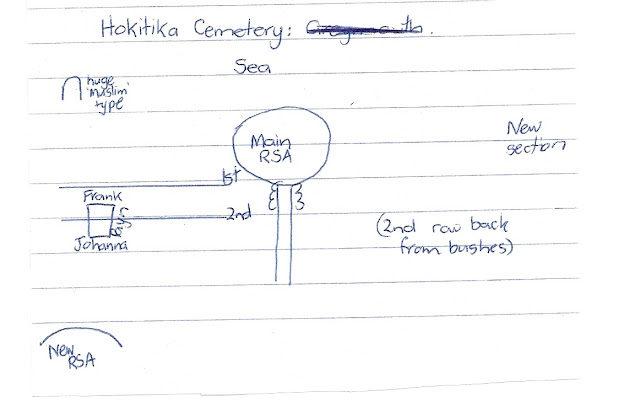Joseph (Giuseppe) SCETTRINI
On
September 20, 1834, John, son of Joseph Abondi Scitrini, and Maria Johanna, daughter of Gugliermus Scilacci, were
married at the Church of the Blessed Mary Virgin of Mt Carmel, in Corippo,
Canton of Ticino, Southern Switzerland.
 |
| From Corippo parish register- via microfilm at Mormon FHC. |
A year
later, on the ninth of September, 1835, their infant son, Joseph, was baptised
at the same church.
 |
| From microfilm of Corippo parish register, 1835,- with my translation. |
Joseph was one of many young men who left Corippo where there were many hardships, and he found his way to the goldfields in Victoria. In 1864 he was married at St Kilian's, Bendigo, to a young Irish woman named Catherine Heneberry. He described
himself then as a 29 year old bachelor, resident at Sailor's Gully.
Their first child, Johanna, was born
at Sandhurst on 29 December 1865, and
their second child, John, was born at Eaglehawk in
1867.
It wasn't long before the family moved across the Tasman to the West Coast goldfields, and settled first at Waimea,
near the Big Dam, during the Goldsborough rush. Johanna is known to have
gone to the school there. At least four
children were born at Waimea: the first was MaryAnne in December 1869, and the
last seems to be Joseph Beneda, born in May 1876.
The family is next known to be
living at Kumara, where Joseph lived for the rest of his days in a house on
Boundary Road.
On 21 March, 1883, Joseph applied
for naturalisation. He was described as a goldminer, 45 years old, who had been living in the
colony of New Zealand for 15 years.
On 6 January, 1887, Catherine
Heneberry died, leaving Joseph a widower with eleven living children (nine of
them girls), ranging in age from two to twenty-one. He never re-married.
In September of 1890, Joseph
discovered gold in a swampy area near Whiskey Creek, and a small rush occurred.
He applied for a 6 acre claim and had constructed a 30ft tunnel. A newspaper
reporter on Sept 15, 1890, found only one person working on the prospector's
claim (assumed to be his son) and states that "I understand that
Scetterini is not well at present and is consequently not working." He
continues later: "I think we should all be desirous of rewarding a
prospector and the storekeepers who had the courage to back him, for months,
and though I consider six acres rather too large a slice for a very small party
of men, I think the area should be in proportion to the labour expended.”
Mr Seddon gave notice in Parliament
on Sept 16, 1890, that this rush had occurred, and named the prospector as J.
Sceterini. He sought Government aid to improve the access track.
Joseph is believed to have buried some of his
gold, but when his section was dug up after his death, none was found.
At the
family reunion in 1992, Elizabeth Payn's wedding photograph from 1912 was
reproduced on the front page of The Greymouth Evening Star. It shows Joseph
Scettrini seated in the front row, complete with walking stick and large white
beard.
Joseph lived until 4 October 1928,
when he died, at 94 years of age, at his
daughter's residence in Boundary Rd, Kumara. He was survived by seven children
and thirty grandchildren. His obituary says: "Deceased followed alluvial
mining practically all his life, and was for some time employed on Government
Roads in and about Kumara. He was one of Kumara's oldest identities, as well as
being one of the longest lived of Kumara's citizens."
Note on
SPELLING of Joseph Scettrini's name.
Joseph's
original first name in Italian was Giuseppe. On the Latin baptismal entry it is
written as josephus. The original spelling in Italian (in Corippo) of the
surname is SCETTRINI, though on the Latin Church entries it appears as
scitrini.
The
surname is OFTEN misspelled, and when searching for information about the
family in indexes, it is necessary to think quite laterally! Some of the variations in spelling that I
have detected include Scetrini, Sectrini, Scetrina, Seitrina, Sechini,
Seitrino, Scetrim, Setrini, Citrini.














